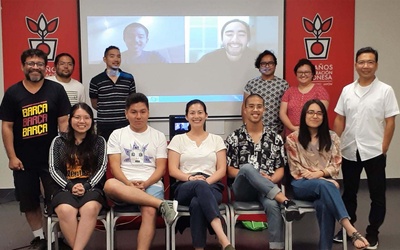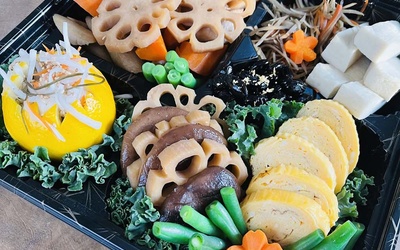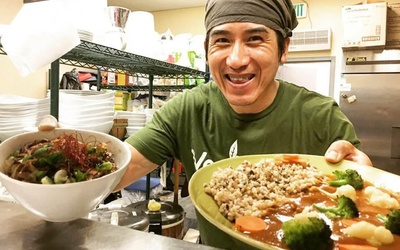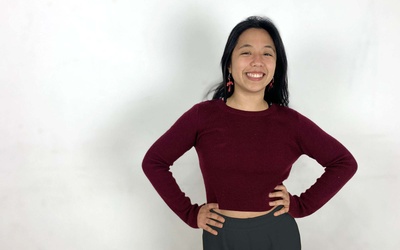Kizuna 2020: Nikkei Kindness and Solidarity During the COVID-19 Pandemic

In Japanese, kizuna means strong emotional bonds. In 2011, we invited our global Nikkei community to contribute to a special series about how Nikkei communities reacted to and supported Japan following the Tohoku earthquake and tsunami. Now, we would like to bring together stories about how Nikkei families and communities are being impacted by, and responding and adjusting to this world crisis.
If you would like to participate, please see our submission guidelines. We welcome submissions in English, Japanese, Spanish, and/or Portuguese, and are seeking diverse stories from around the world. We hope that these stories will help to connect us, creating a time capsule of responses and perspectives from our global Nima-kai community for the future.
* * * * *
Although many events around the world have been cancelled due to the COVID-19 pandemic, we have noticed that many new online only events are being organized. Since they are online, anyone can participate from anywhere in the world. If your Nikkei organization is planning a virtual event, please post it on Discover Nikkei’s Events section! We will also share the events via Twitter @discovernikkei. Hopefully, it will help to connect us in new ways, even as we are all isolated in our homes.
Stories from this series
Young artists in the new virtuality - Part 2
March 5, 2021 • Javier García Wong-Kit
Read part 1 >> An empty wall is endless possibilities. This is how the plastic artist and cultural manager Haroldo Higa sees it, in less metaphorical terms, who has built a wall, concrete and at the same time virtual, for young artists of Japanese descent with the Nikkei Young Art Salon, which every year brings together sculptors, designers, draftsmen, ceramists, visual artists and other creators to reflect on their identity and their work. “Bringing young Nikkei artists closer to each …
Clothing for All Generations
Feb. 9, 2021 • Allison Haramoto
As small businesses across the U.S. struggle to stay afloat in the midst of the current pandemic and economic down-turn, Alec Nakashima is extremely grateful that his clothing company, Akashi-Kama, has been able to adapt to this “moment in time” and survive — giving him the opportunity to help his community and look toward 2021 with the anticipation of better days ahead. Nakashima launched Akashi-Kama online in May 2019, offering designs that blend the beauty of the Japanese aesthetic with …
Young artists in the new virtuality – Part 1
Jan. 28, 2021 • Javier García Wong-Kit
2020 has been an especially hard year for artists and other cultural protagonists in Peru. To the closed theaters, canceled concerts and other spaces in an indeterminate suspension, is added a slow economic recovery that affects workers in all sectors and consumers, leading them to change their habits for digital dispersions feasible in voluntary isolation. If the galleries were spaces for socialization, to meet the artists and listen to them, the Peruvian Japanese Cultural Center had gone a step further …
Oshogatsu—Remembering Grandpa Sonny
Jan. 15, 2021 • Jane Shohara Matsumoto
When my Facebook friend suggested a submission for Discover Nikkei’s Oshogatsu photo activity, it simply opened up a floodgate of cherished memories. In my family everyone calls me Scrooge McDuck because I dread the Christmas hype, from gift giving to tree decorations, cookie-baking, and the card exchanges that for me, are simply “over the top.” Oshogatsu, on the other hand, is something I love and anticipate each year. Oshogatsu—the way my family celebrates it—is an event imposed by me in …
Vegan restaurant owner Akira Nakao's efforts under ever-changing business restrictions
Jan. 6, 2021 • Keiko Fukuda
"Just do the same thing as before" Huntington Beach, Orange County. Vegan restaurant VegiLicious is located in a secluded corner of an inconspicuous shopping mall, quite far from the freeway. The restaurant's owner and chef, Akira Nakao, serves Japanese dishes such as curry, ramen, and Kobe yakiniku donburi. As it is a vegan restaurant, all the ingredients are naturally plant-based and organic. The healthy dishes, which Nakao himself makes with love, have earned a reputation, and despite the restaurant's less …
Yuriko Tanaka: body language
Jan. 4, 2021 • Javier García Wong-Kit
There is a common phrase that says that “the performance must continue” and that phrase seems to respond to the artistic work of Yuriko Tanaka, a Nikkei circus artist who, in the face of adversities such as the pandemic, and her own demand to experiment with other languages, has had a period very productive despite the closure of theaters and other venues or stages in Peru. In 2019, the stage show oja , directed and written by her, had won …










































